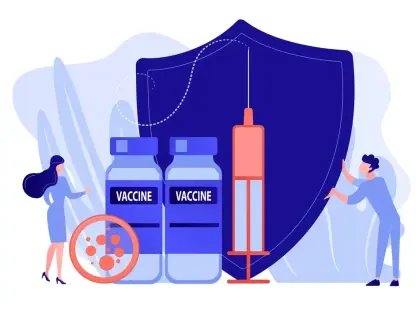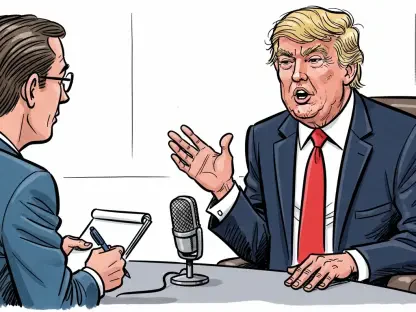I’m thrilled to sit down with Donald Gainsborough, a political savant and leader in policy and legislation, who is at the helm of Government Curated. With his deep expertise in federal health administration, Donald offers a unique perspective on the recent challenges facing the Health Resources and Services Administration (HRSA), a critical yet often under-the-radar agency. Today, we’ll dive into the impact of significant staff reductions at HRSA, exploring how these changes affect healthcare programs for vulnerable populations, the ripple effects on communities and providers, and the broader implications for healthcare access across the nation. Let’s get started.
Can you walk us through what HRSA does and why it plays such a vital role in the lives of so many Americans?
Absolutely. HRSA, or the Health Resources and Services Administration, is a federal agency that channels over $12 billion each year into essential healthcare programs. It supports community health centers, addiction treatment services, maternal and child health initiatives, and workforce training, particularly for underserved and rural areas. Think of it as a backbone for the nation’s safety net—helping millions who might otherwise fall through the cracks. From telehealth for moms in rural New Mexico to training nurses in South Dakota, HRSA’s work touches lives in profound ways. Its importance lies in ensuring that healthcare isn’t just a privilege for some, but a reachable resource for everyone, especially those in the most vulnerable communities.
How have the staff cuts at HRSA since February impacted the agency’s day-to-day operations?
The cuts have been staggering. Since February, roughly a quarter of HRSA’s workforce—around 700 employees—have either been let go or chosen to leave. We’re talking about key roles like analysts, grant managers, and nursing consultants who are critical to keeping the wheels turning. The agency had about 2,700 staff at the start of 2025, and losing so many so quickly has created a real strain. Remaining employees are stretched thin, working overtime just to manage the basics. It’s like trying to run a hospital with half the doctors—something’s got to give, and unfortunately, it’s often the speed and quality of getting funds out to programs that need them most.
What are you seeing in terms of specific programs or grants being affected by these staffing shortages?
There’s already been noticeable fallout. One glaring example is the Scholarship for Disadvantaged Students program, which helped low-income and minority students train for healthcare careers like dentistry or nursing—jobs desperately needed in rural and urban shortage areas. That funding has been halted, with competitions canceled, leaving schools and students scrambling. Beyond that, delays are piling up across the board. Grants to community health centers and other initiatives are taking longer to process, and with fewer eyes on oversight, there’s a risk of errors or funds not reaching where they’re needed most. It’s a domino effect that hits the ground level hard.
How are healthcare providers, like hospitals and clinics, coping with these funding delays or reductions?
Providers are in a tough spot. Many of these organizations—especially community health centers serving over 31 million people—rely on HRSA grants to keep their doors open. With delays, they’re facing cash flow issues, forcing some to rethink how they operate. I’ve heard from folks in places like Virginia, where clinics are treating hundreds of thousands of patients annually, and they’re now bogged down by extra red tape just to access funds they’ve already been approved for. It’s not just about money; it’s time and staff they don’t have. Understaffed clinics are struggling to meet reporting demands on top of patient care, and that’s a real burden on an already strained system.
What’s the atmosphere like among HRSA employees, both current and former, amidst these changes?
The mood is heavy, to say the least. Current staff are battling burnout, yet there’s this incredible dedication—I’ve heard stories of people working around the clock to keep programs afloat, almost as if it’s personal. Former employees are heartbroken; many spent years building these initiatives, and they’re worried the agency’s mission is at risk. There’s a pervasive fear about the future—whether more cuts are coming or if entire programs might disappear. It’s not just a job for these folks; it’s a calling to support mothers, children, and struggling communities, and seeing that jeopardized is taking a real emotional toll.
Looking ahead, how do you think these cuts could shape healthcare access for Americans in the long term?
The long-term picture is concerning. If HRSA’s capacity to fund and oversee programs keeps shrinking, community health centers could face closures or reduced services, directly hitting the 31 million people who depend on them. Rural hospitals, already on thin ice, might not survive without grants, and workforce training programs could dry up, worsening shortages of doctors and nurses where they’re needed most. There’s also a broader economic ripple—when safety nets fail, emergency rooms get overwhelmed, unpaid medical bills stack up, and insurance premiums rise for everyone. It’s not just about access; it’s about affordability and stability for the whole healthcare system.
There’s been some strong pushback from lawmakers about these staff reductions. How do you view their response and the potential for change?
The pushback from lawmakers, especially from several Democratic senators, has been vocal and pointed. They’ve demanded answers about why these mass firings happened and what it means for vulnerable populations. I think their response is crucial—it signals that HRSA’s role isn’t going unnoticed, and there’s bipartisan support for things like community health center funding. However, the lack of clear answers from the administration is troubling. Without transparency or a plan to rebuild staffing, it’s hard to see a quick resolution. Lawmakers can raise the alarm, but reversing these cuts or protecting programs will take sustained pressure and, frankly, political will that might be tough to muster in the current climate.
What’s your forecast for the future of HRSA and its impact on healthcare under these circumstances?
I wish I could be more optimistic, but the road ahead looks rough. With proposals floating around to eliminate HRSA entirely in future budgets, alongside cuts to key programs like rural hospital grants and HIV/AIDS support, the agency’s very existence feels uncertain. If staffing and funding continue to erode, we’re looking at a weakened safety net at a time when healthcare disparities are already stark. My forecast is that without significant intervention—whether through congressional action or a shift in administration priorities—HRSA’s ability to support millions of Americans will diminish, and the gaps in care will widen. I hope I’m wrong, but the trends are hard to ignore.









